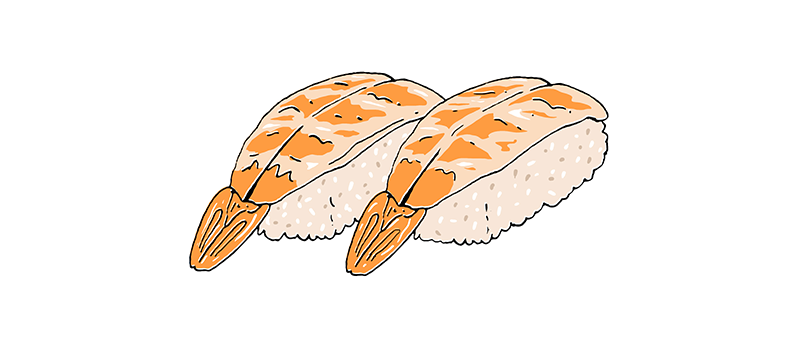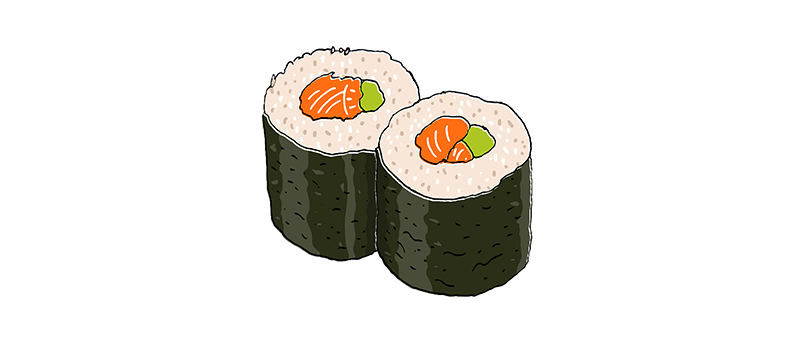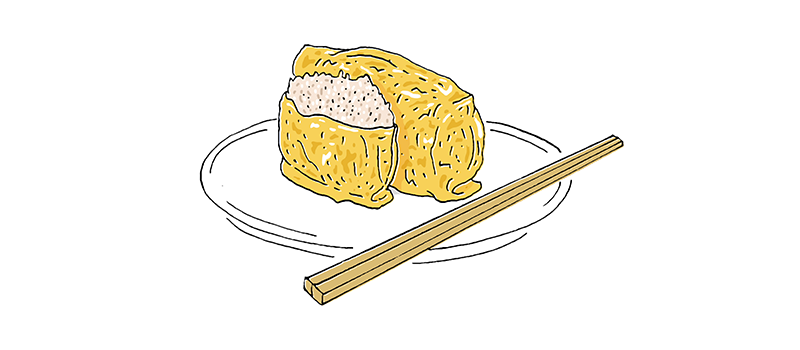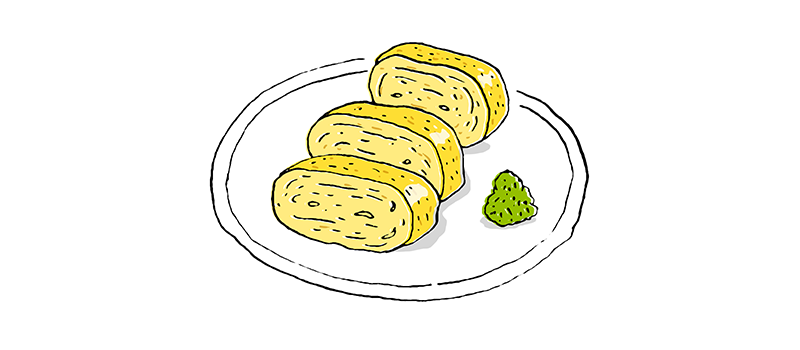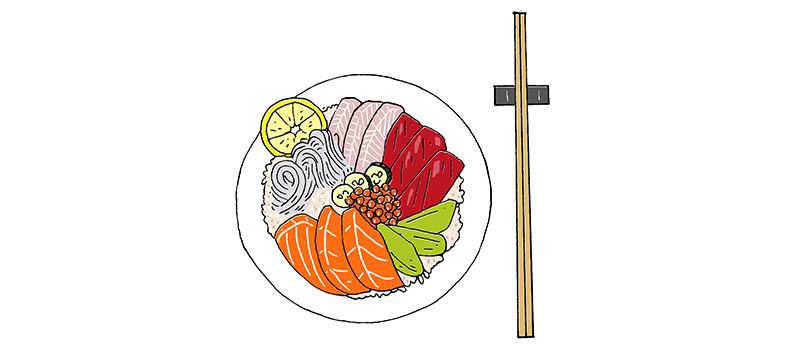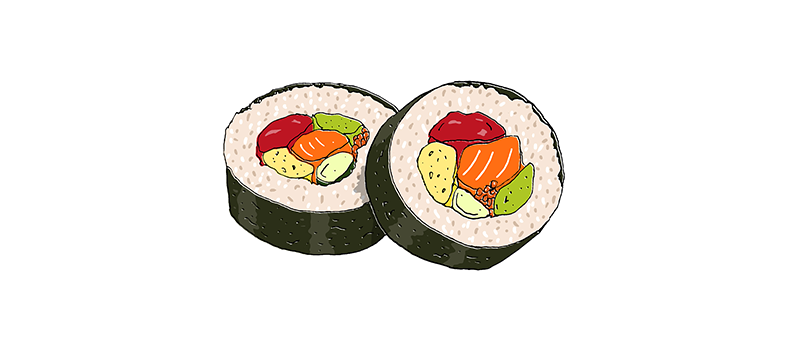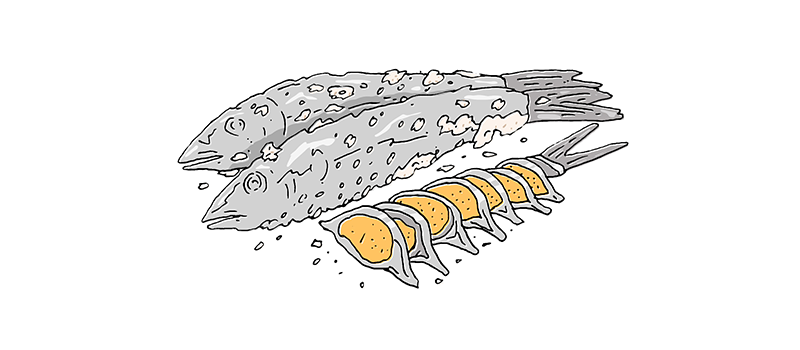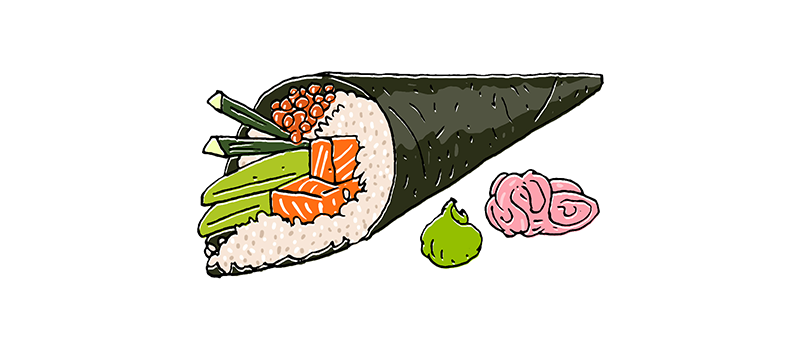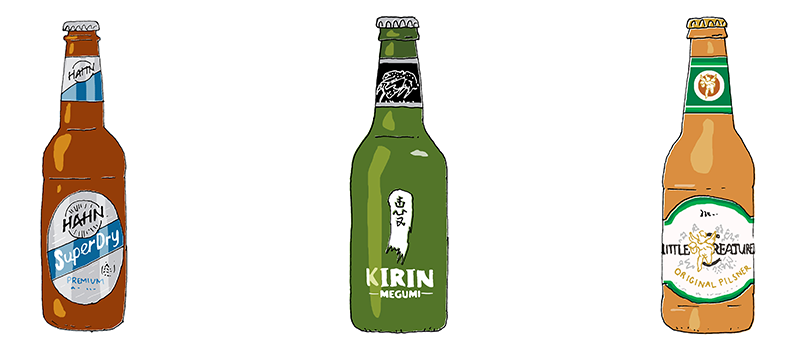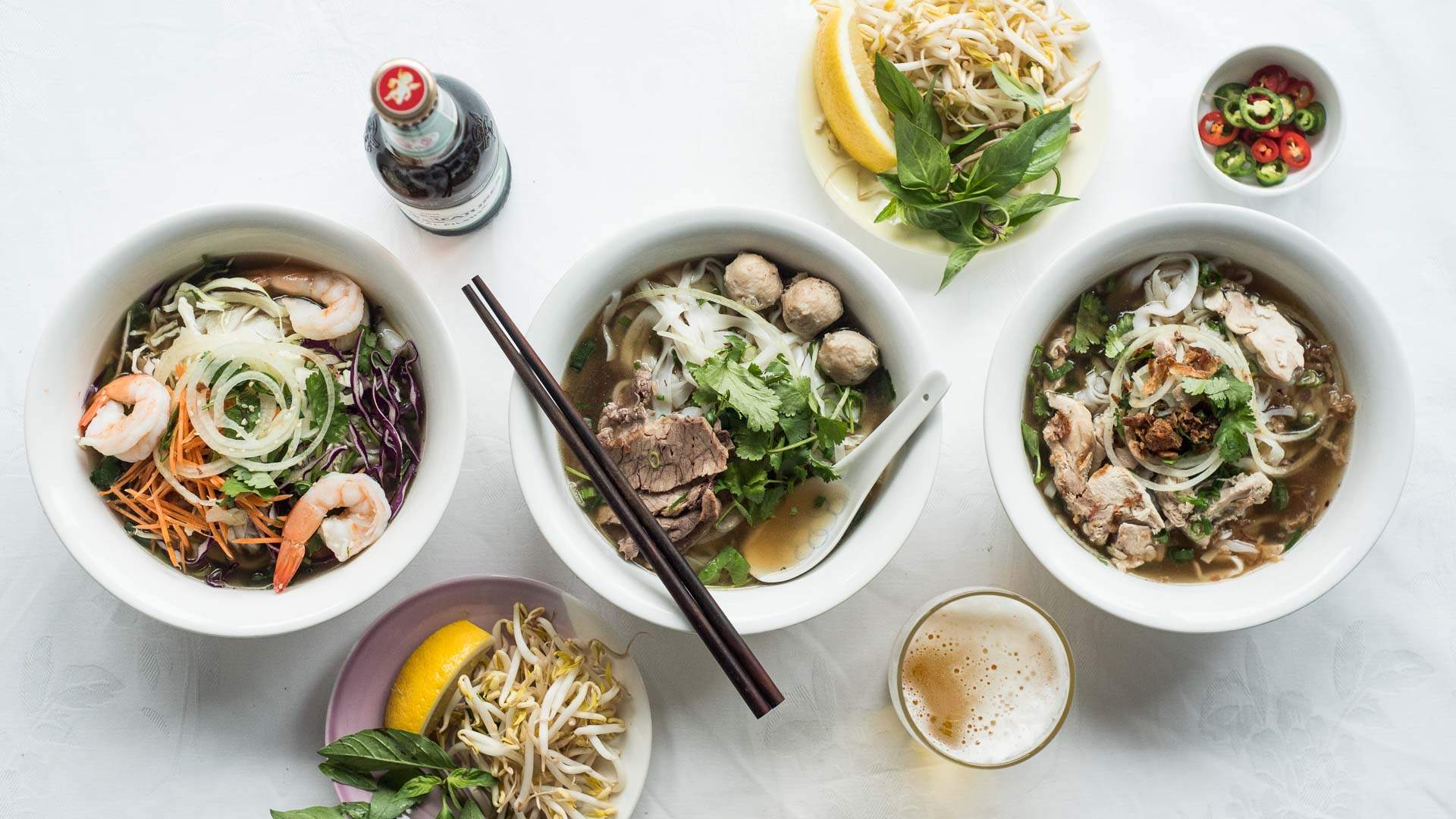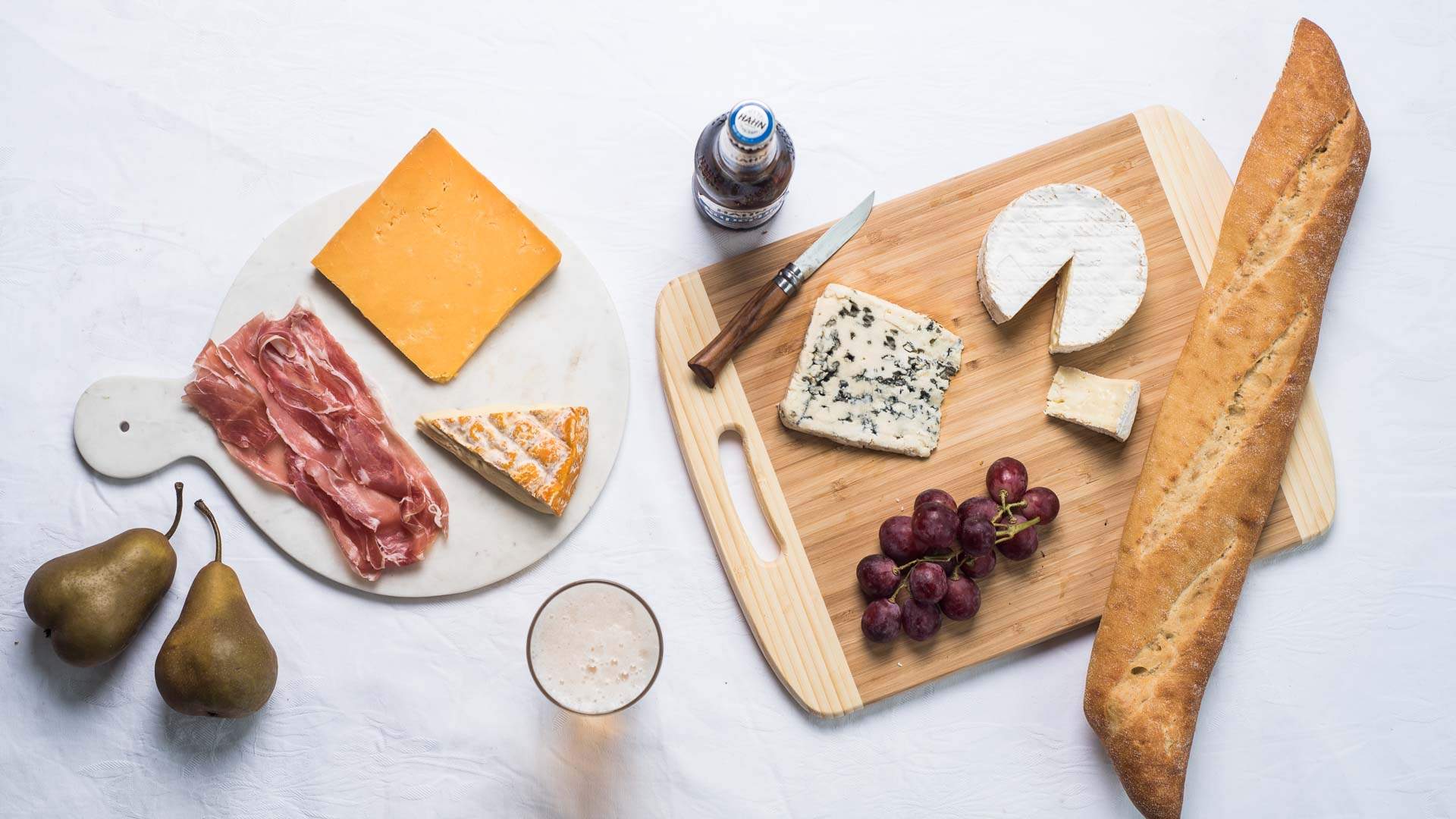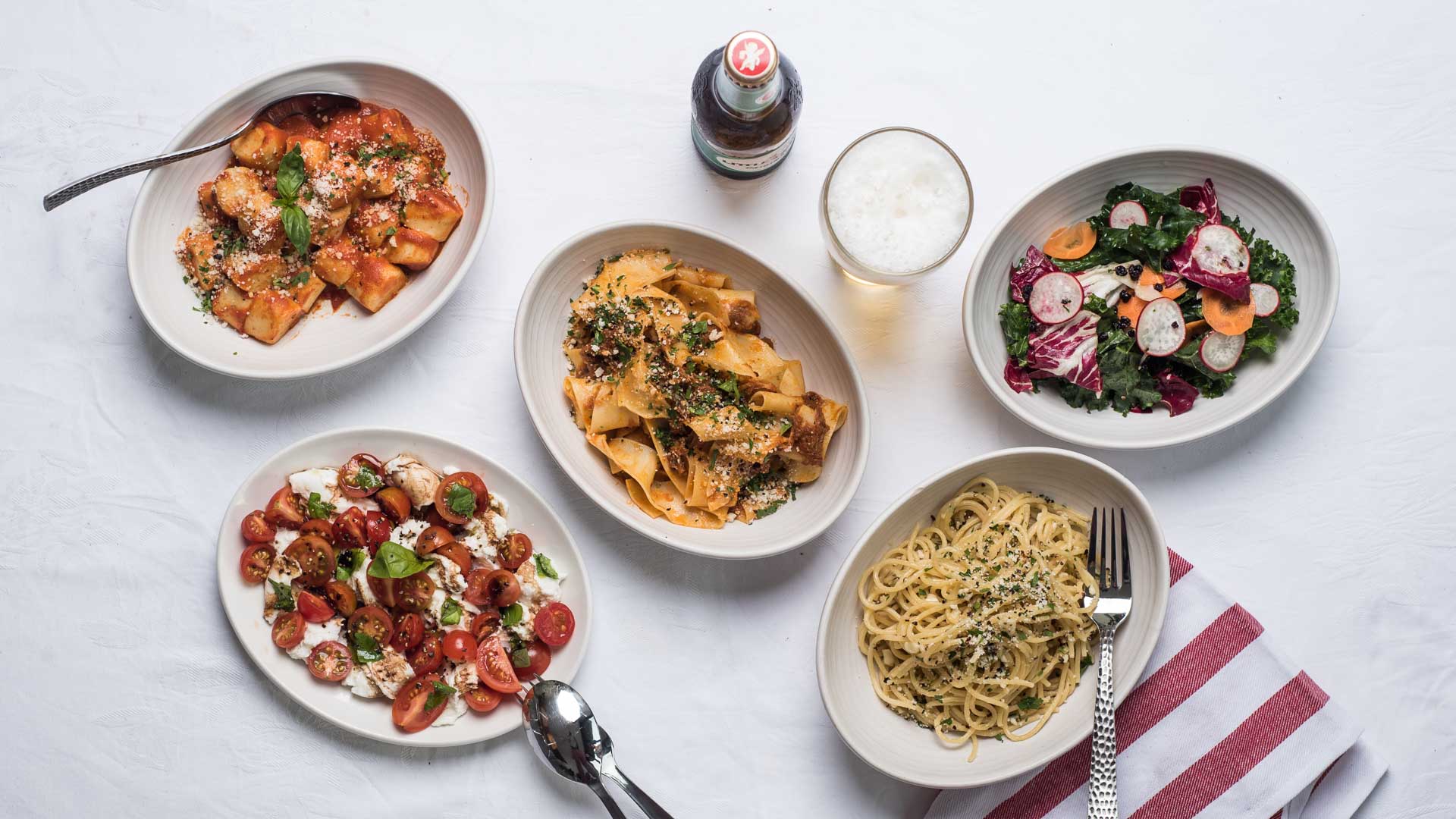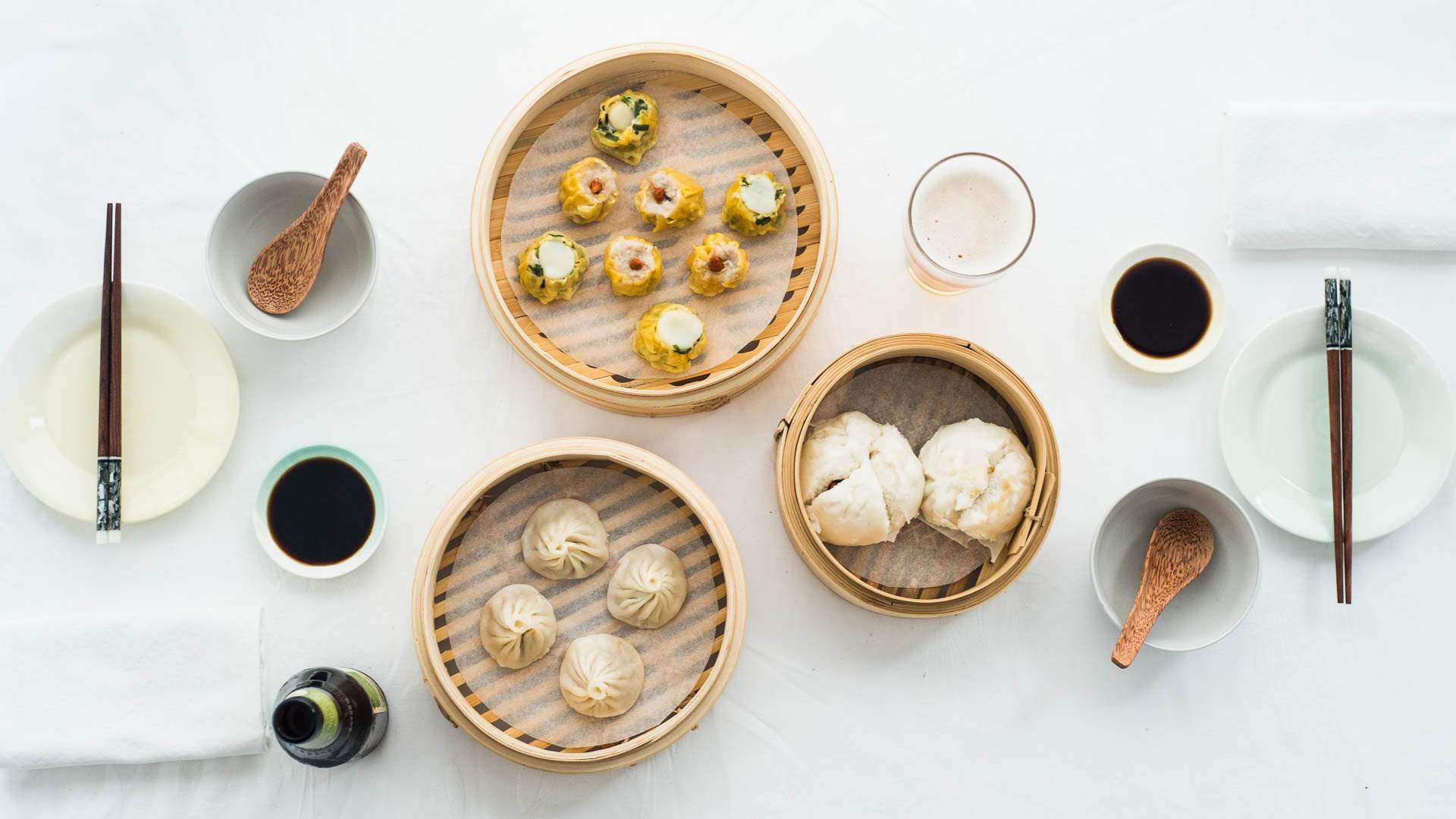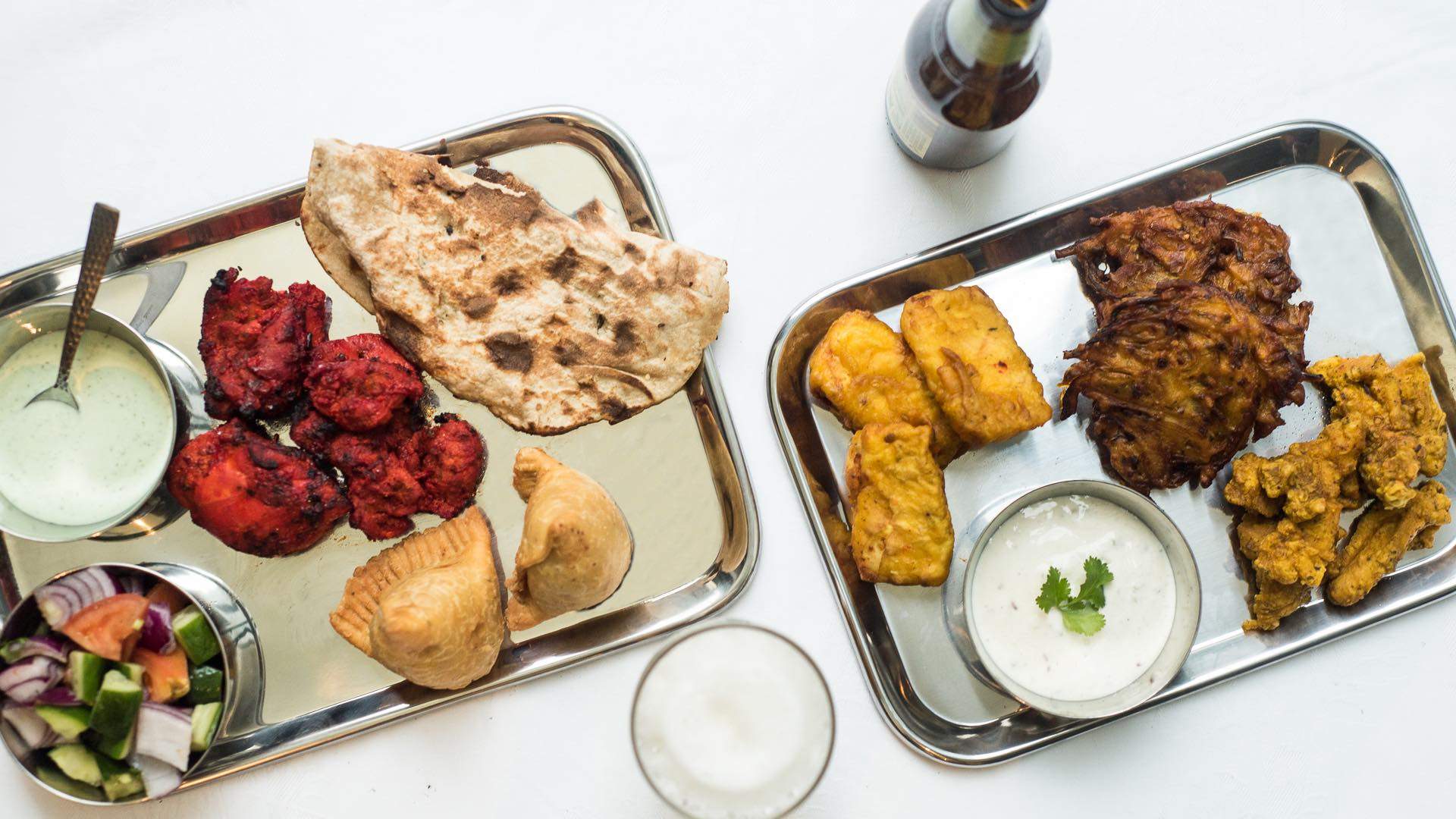
Sushi
Next time you're sitting blankly at a sushi train, know your nigiri from your tamagoyaki and oshizushi.
For something that’s essentially fish, rice and vinegar, sushi is a rather complex food. As the chefs who train for ten years to be considered sushi masters will tell you: when it comes to sushi, the flavour is in the detail. From the freshness and cut of the fish to the sweet vinegary taste of the rice, the sharp hint of wasabi, the light swish of the soy, the embodiment of umami — everything matters. It’s no wonder sushi is one of the only foods to have an entire movie based on the quest for sushi perfection.
Jiro Dreams of Sushi may have intrigued folks over the last few years, but with millions around the world eating sushi every day, it’s just a drop in the ocean for sushi enthusiasts. Yet for a food that’s seen folks win Michelin stars (Jiro’s restaurant has three), sushi is remarkably unpretentious — it pairs wonderfully with beer and it’s as happy to be adapted to Californian tastes (surprise, avocado is not a traditional addition) as it is to variations on the more traditional ebi nigiri.
Sushi
Fun Facts about
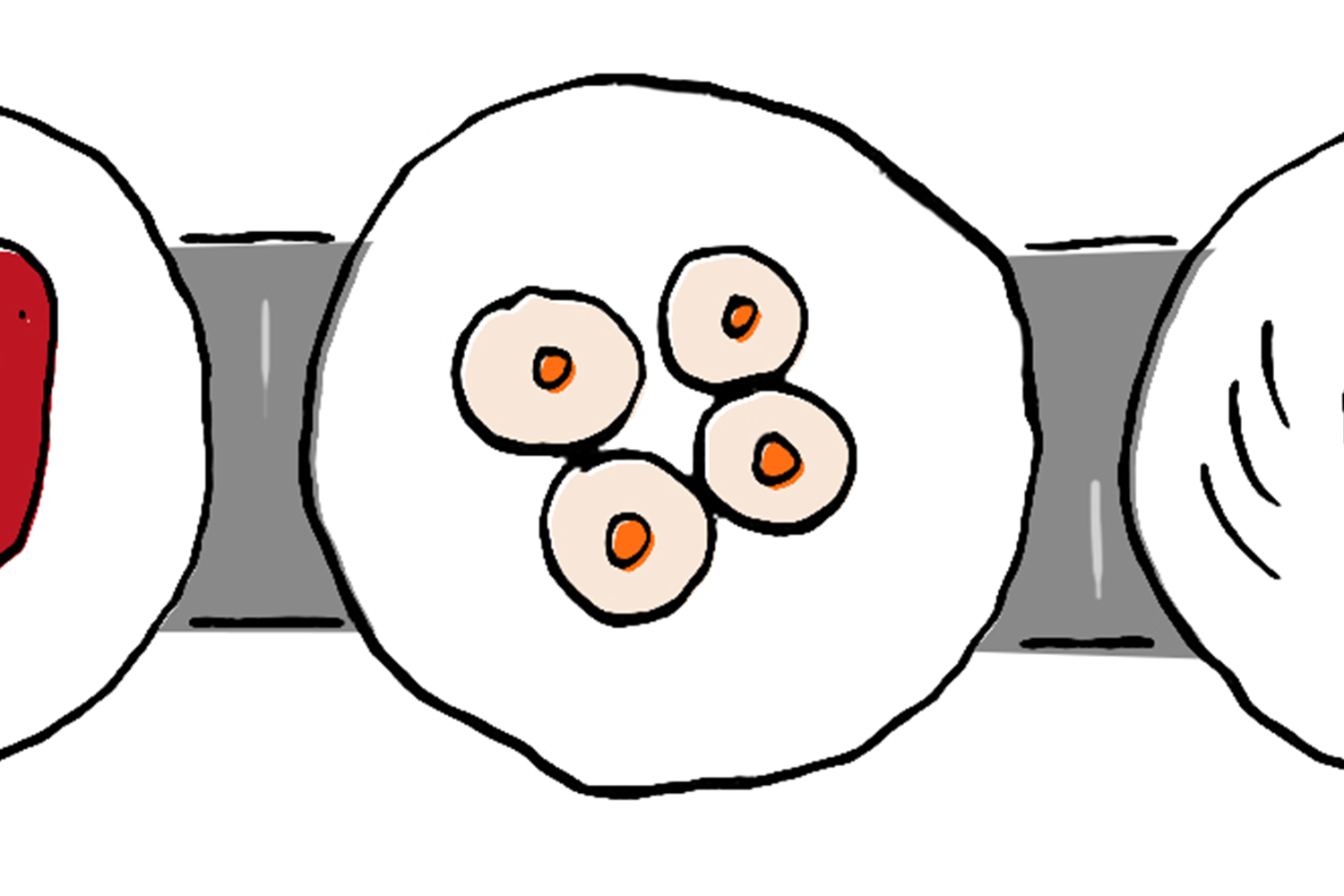
When the first sushi conveyor belt restaurant opened in Osaka.
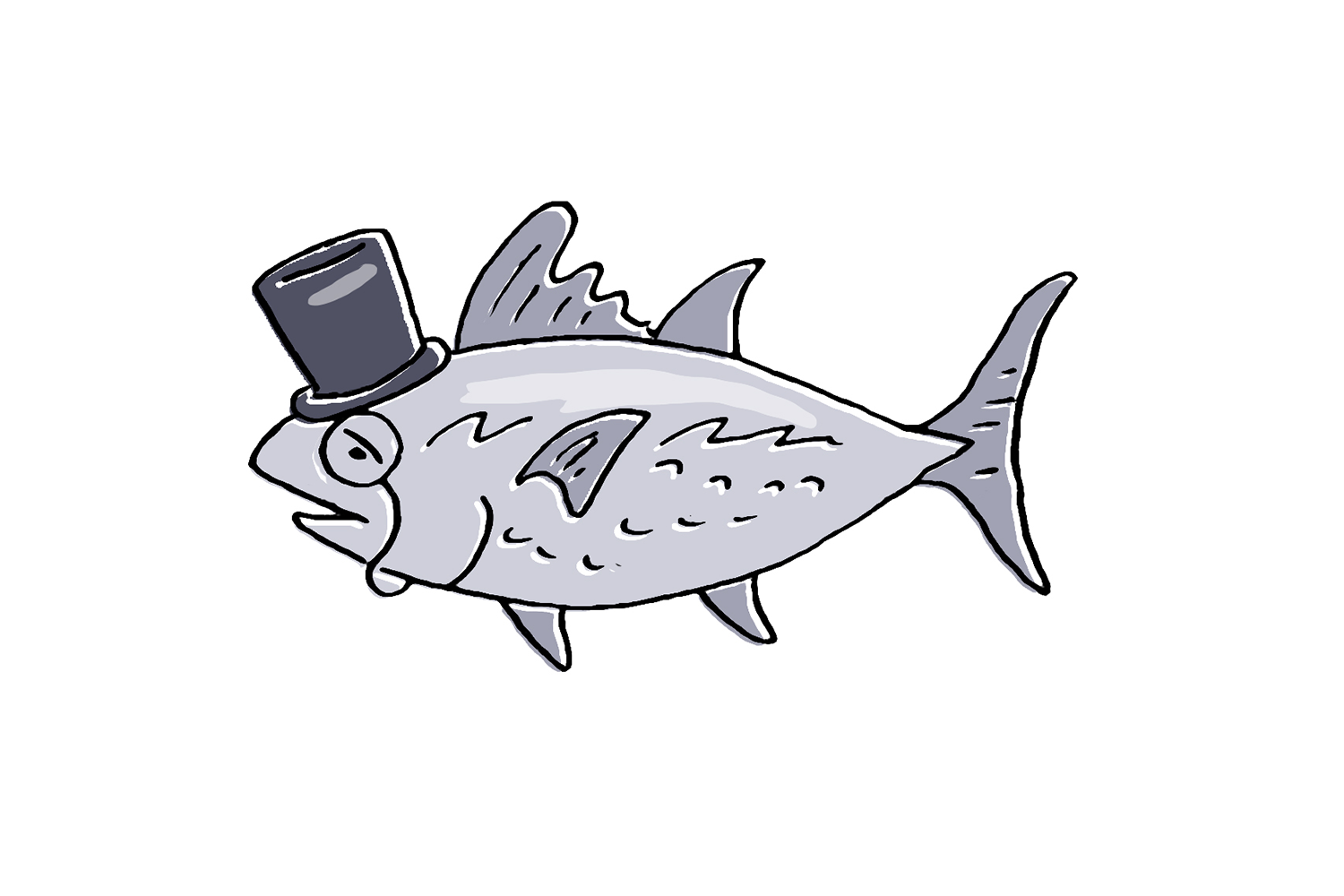
The highest price ever paid for a bluefin tuna.
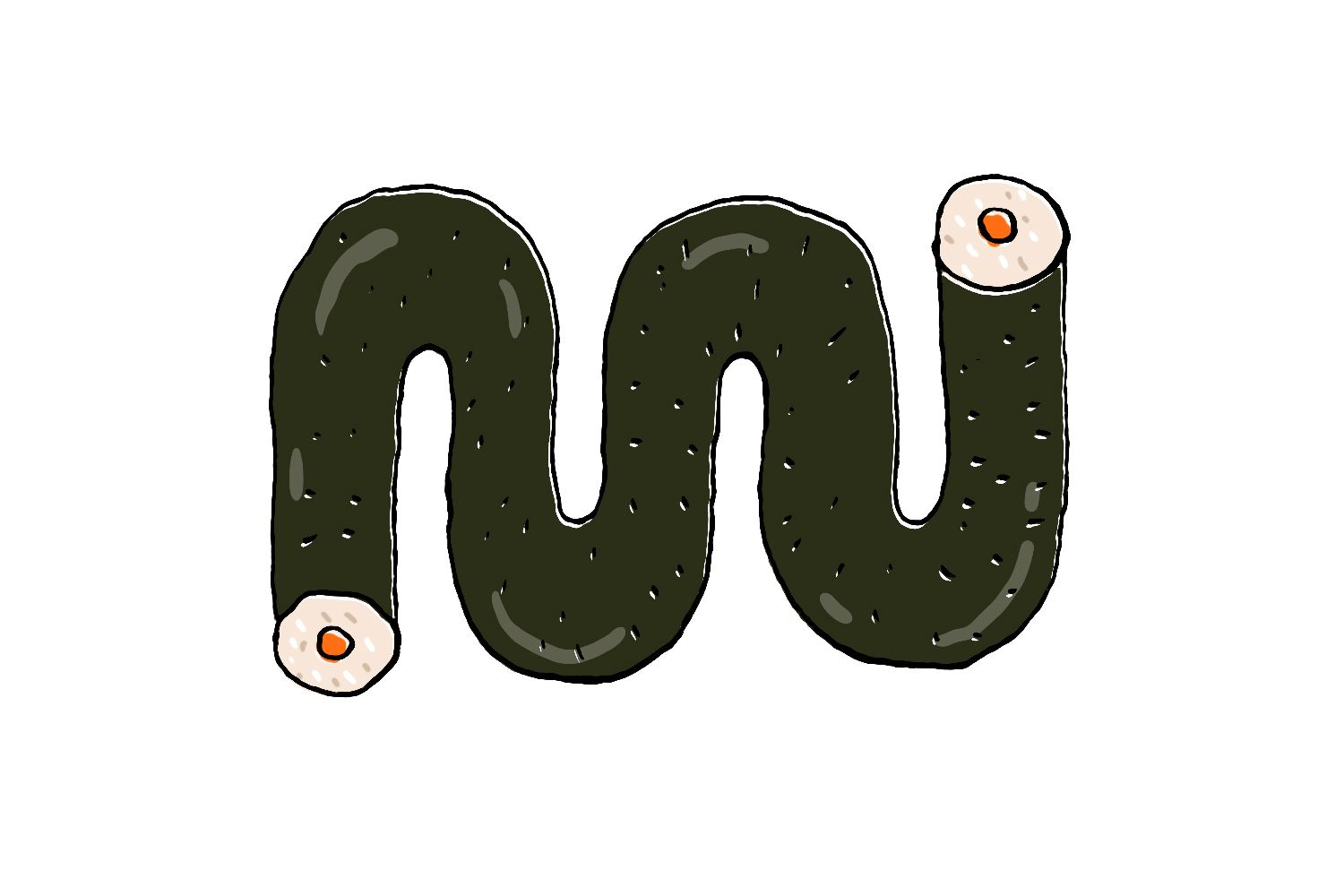
The length of the longest sushi roll ever made.
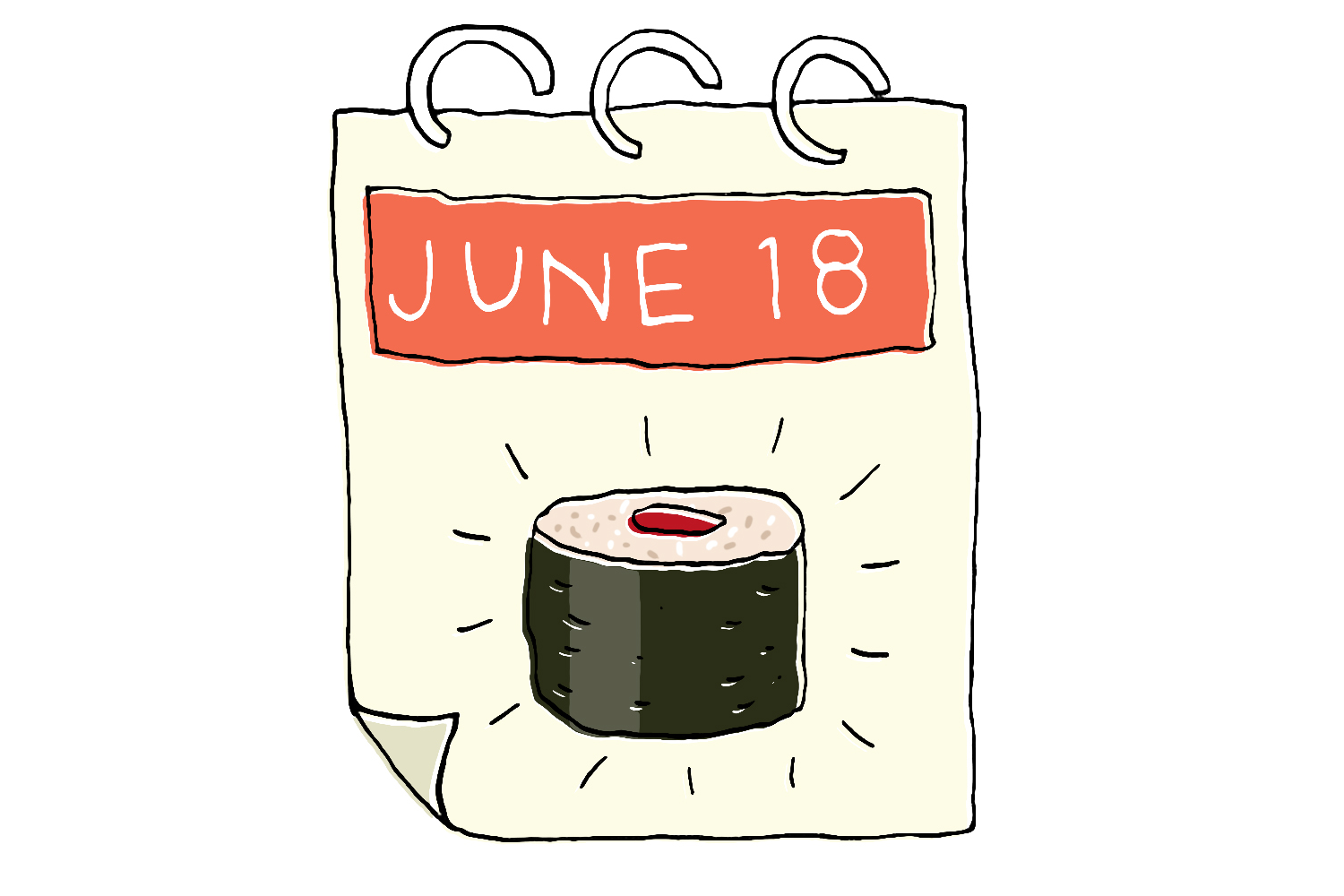
When International Sushi Day is officially celebrated.
A BITE-SIZED HISTORY OF SUSHI
Sushi has its origins in southeast Asia, where cooked rice, which ferments over time, was used as a way of preserving and pickling fish. Over the centuries, sushi remained a form of preserving fish and it also became a meal in itself, with the pickled fish served alongside fermented rice flavoured with rice vinegar.
Modern sushi started as so many of these things do — with an intrepid street vendor. Hanaya Yohei was the first to place fresh fish from Tokyo Bay — so fresh it didn’t need preserving — on top of vinegary rice and serve it to hungry travellers. Before long, there were sushi carts all over the capital. After the Great Kantō Earthquake of 1923, sushi chefs moved indoors to maintain higher health standards, and the upward trend of sushi from street food to Michelin stars began. It wasn’t until Hollywood sushi restaurant Osho became a hit with film stars (namely Yul Brynner) that it hit the mainstream in the west.
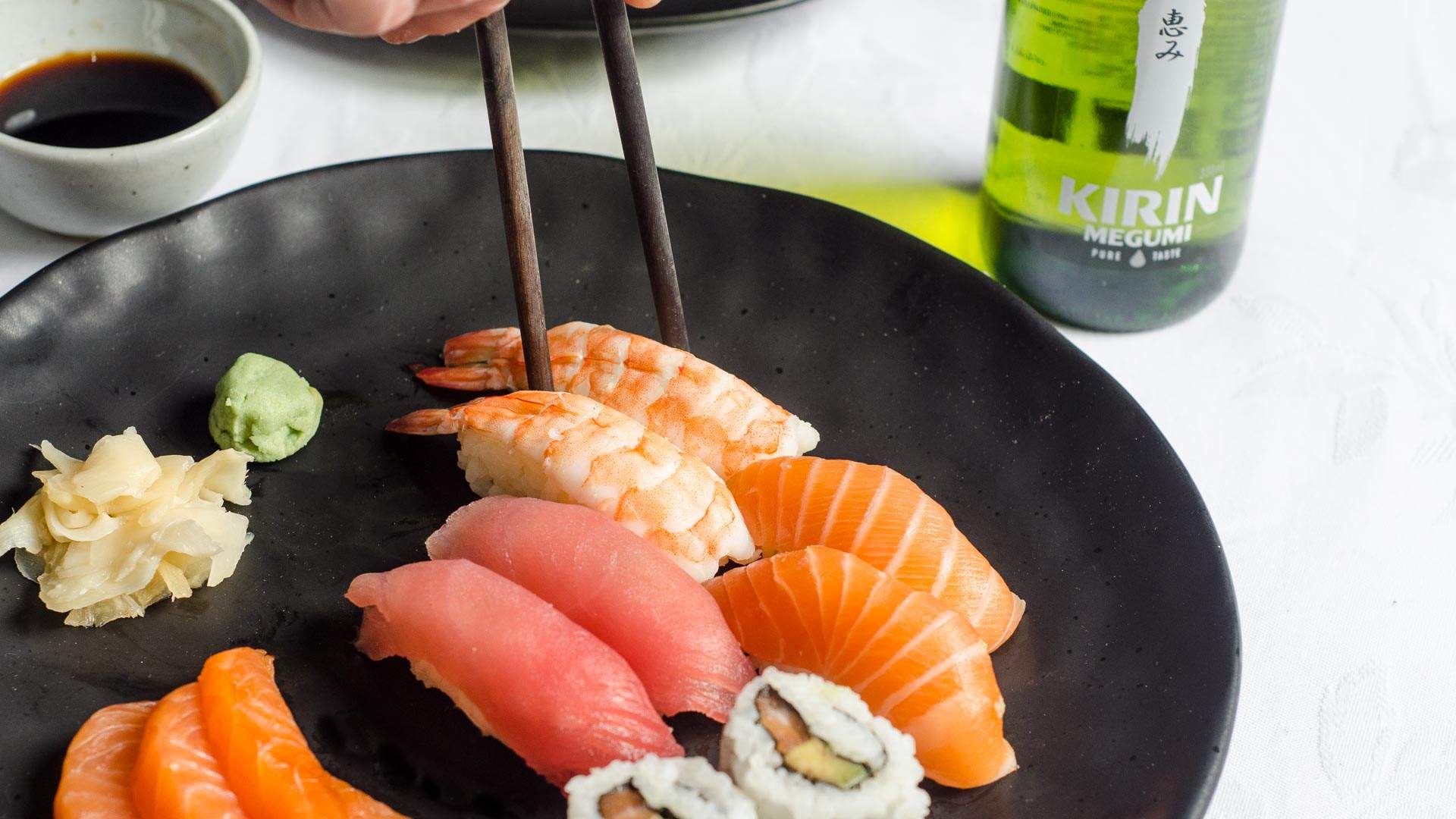
THE MANY VARIETIES OF SUSHI
You don’t hang around for over a thousand years without getting a little, well, inventive. From egg custard sushi to the modern variations emerging from America (like rock ‘n’ roll sushi), sushi has come a long way from being a type of pickling. Here’s how to tell the different types of sushi rolling by on the train apart.
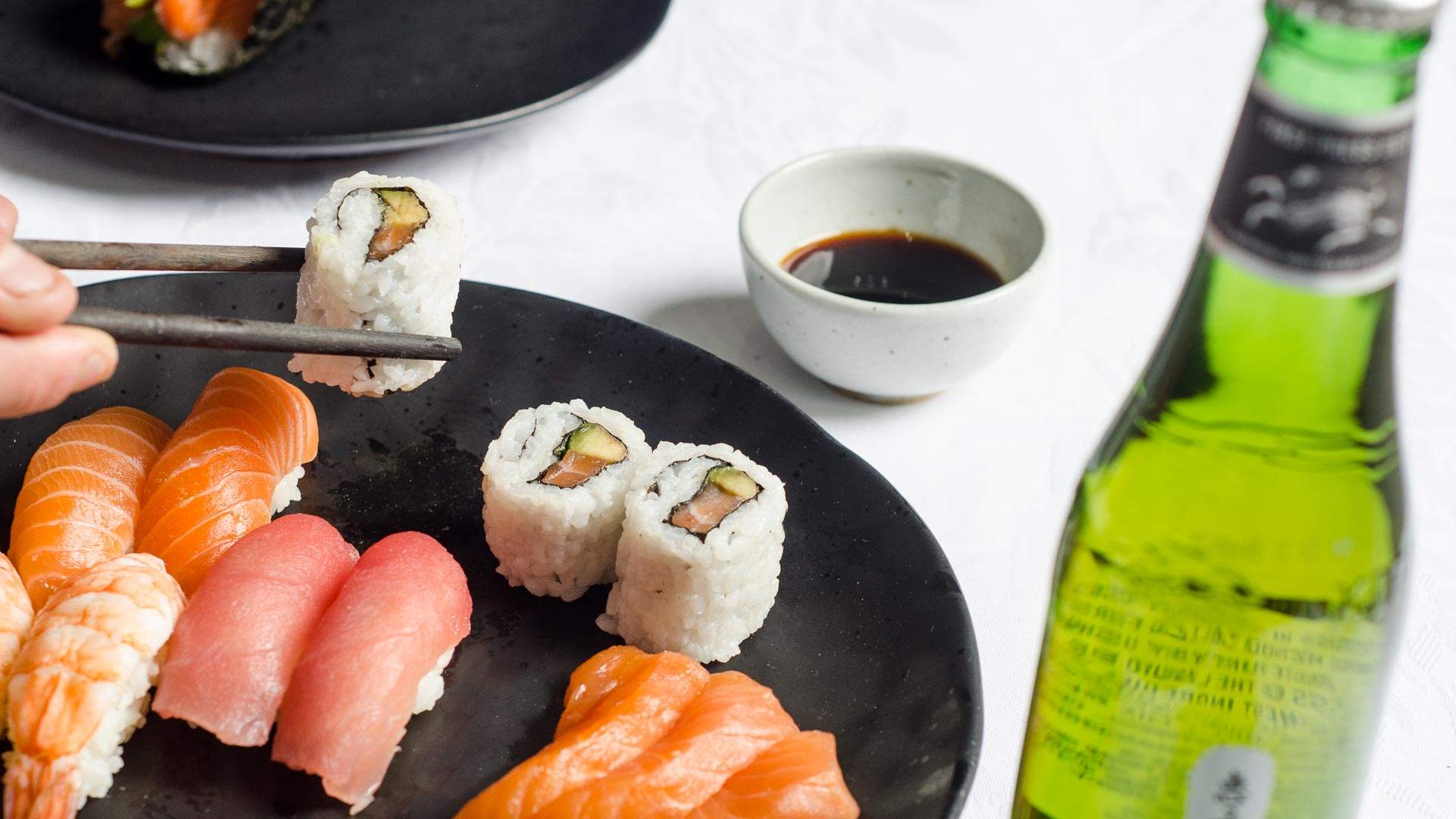
EATING ETIQUETTE
Sushi is a deceptively simple food — it relies on a chef getting the balance of flavour just so. But that simplicity means it has become a battleground of etiquette. Do you use chopsticks or your fingers? Are you allowed to dunk your sushi in soy sauce? Should you ever eat a California roll?
Firstly, you can eat sushi with your fingers — as long as you clean your hands first (did you really need us to tell you that?). High-end sushi joints, like the famous Sukiyabashi Jiro in Tokyo, will provide you with a hot towel at the beginning of your meal. Whether you use chopsticks or your hands, just make sure you don’t squish the sushi rice, which has been perfectly moulded by the chef.
The next step in getting your sushi from plate to mouth is deciding whether to use extra soy sauce. Let us ask you some questions: have you paid over $5 for the piece of sushi in your hands? Are you being served by someone who has trained in sushi for over ten years? If you’ve answered ‘yes’ to any of those questions, put down the soy sauce and don’t even think about wasabi — your sushi chef has already perfectly balanced the flavours on your plate. If you want to be contrary and use soy sauce, make sure you only place it on the fish, not the rice, which will turn into a gluggy mess.
Okay, you’ve navigated through the choppy waters of chopsticks and flavouring — now you just have to work out how to eat the damn thing. Our advice? Eat it in one bite. Go on, just pop it in. Traditional styles of sushi, like nigiri, are designed to be one-bite food. And after you’ve finished your piece of sushi, cleanse your palate with the provided ginger or a swig of your beer, ready for the next round.
A PERFECT COMBINATION
If you’re downing sushi like a pro (read the instructions above), you’ll need a bev to wash it all down. A Kirin Megumi is an obvious choice — the smooth Japanese lager with a floral aroma is designed to go well with seafood, and its crisp taste is perfect for cleansing your palate before each piece of sushi. Little Creatures Pilsner is similarly refreshing, with its crisp bitterness making it a great beer for sushi on the spicier side. And light, easy drinking Hahn SuperDry has a dryness to accompany the umami of your sushi, soy and wasabi sensory overload.
Craving sushi and beer? Get your fix at the Melbourne Night Noodle Markets by Beer The Beautiful Truth from November 9 to 26.
Illustrations: Barry Patenaude.
Images: Kimberley Low.
Discover more eats
-
Event
Night Noodle Markets 2017
One of Melbourne's biggest Asian food events returns for 18 nights of noodles, dumplings and other delights.
-
Feature
Encyclopedia of Eats: Vietnamese Noodle Soups
Chances are you've eaten a few bowls of pho in your time — but that's just the start of Vietnam's vast pool of soup varieties.
-
Feature
Encyclopedia of Eats: French Cheese
You can never go wrong with cheese — the French have made sure of that. Up your fromage savoir-faire, from melty Pont L'Eveque to pungent Roquefort.
-
Feature
Encyclopedia of Eats: Pasta
Italian pasta. A staple that defines a nation and is loved the world over. Get to know your pappardelle from your campanelle from your farfalle.
-
Feature
Encyclopedia of Eats: Chinese Dumplings
Get to know China’s ten most famous dumplings, and impress the group next time you're feasting on the doughy delights.
-
Feature
Encyclopedia of Eats: Mexican Street Food
From tacos to tamales, sample Mexico's world-famous cuisine right here in Australia. Discover some of the best snacks to order.
-
Feature
Encyclopedia of Eats: Indian Street Food
As varied as it is delicious, Indian food is a firm favourite the world over — but don't limit yourself to only curries.
-
Feature
Encyclopedia of Eats: Turkish Kebabs
While kebabs may be something we recognise as an end-of-the-night snack, the history and varieties of the humble dish go far beyond a lamb sandwich with extra garlic sauce at 3am.

